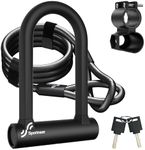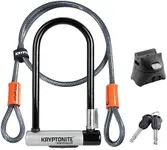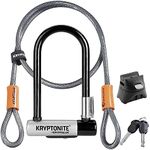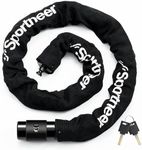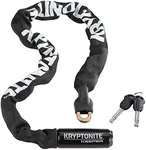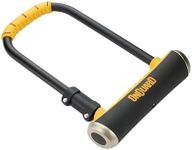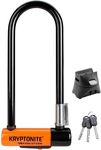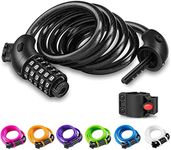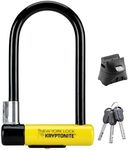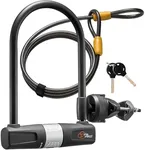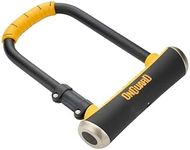Buying Guide for the Best Bicycle Locks
Choosing the right bicycle lock is essential to keep your bike safe from theft. There are many types of locks, each with their own strengths and weaknesses. The best lock for you depends on where you park your bike, how long you leave it unattended, and how portable you need the lock to be. Understanding the key features of bicycle locks will help you make a smart choice that balances security, convenience, and practicality.Lock TypeLock type refers to the design and mechanism of the lock, such as U-locks, chain locks, cable locks, and folding locks. This is important because each type offers a different balance of security and portability. U-locks are generally the most secure but can be heavy and less flexible. Chain locks offer flexibility and good security but can be bulky. Cable locks are lightweight and easy to carry but offer the least security. Folding locks are compact and offer moderate security. To pick the right type, consider how often you need to carry the lock, where you usually park your bike, and the level of theft risk in your area.
Security RatingSecurity rating is a measure of how resistant the lock is to theft attempts, often provided by independent organizations. This is important because it gives you an idea of how much protection the lock offers. Ratings usually range from basic to high security. Basic security is suitable for quick stops in low-risk areas, while high security is needed for long-term parking or high-theft locations. Choose a security rating that matches the risk level of where you leave your bike and how valuable your bike is to you.
Locking MechanismThe locking mechanism refers to how the lock is secured and opened, such as key, combination, or smart locks. This matters because it affects both convenience and security. Key locks are common and reliable, but you need to keep track of the key. Combination locks are convenient since you don’t need a key, but the code can be guessed or forgotten. Smart locks use apps or Bluetooth and can offer extra features, but they rely on batteries and technology. Choose a mechanism that fits your lifestyle and how comfortable you are with technology.
Size and WeightSize and weight determine how easy the lock is to carry and how much of your bike it can secure. Larger and heavier locks are usually more secure but can be cumbersome to transport. Smaller and lighter locks are easier to carry but may not fit around larger objects or offer as much protection. Think about how you plan to carry the lock and what you need to lock your bike to, then choose a size and weight that fits your daily routine.
Material and Build QualityMaterial and build quality refer to what the lock is made of and how well it is constructed. This is important because stronger materials like hardened steel are more resistant to cutting and tampering. Poor build quality can make even a heavy lock easy to break. Look for locks made from high-quality metals and with solid construction, especially if you need higher security. If you only need basic protection, lighter materials may be sufficient.
Weather ResistanceWeather resistance means how well the lock can withstand rain, snow, and other outdoor conditions. This is important because exposure to the elements can cause rust or make the lock hard to use. Some locks have protective coatings or covers to keep out water and dirt. If you often leave your bike outside, choose a lock that is designed to resist weather and won’t seize up or corrode over time.
